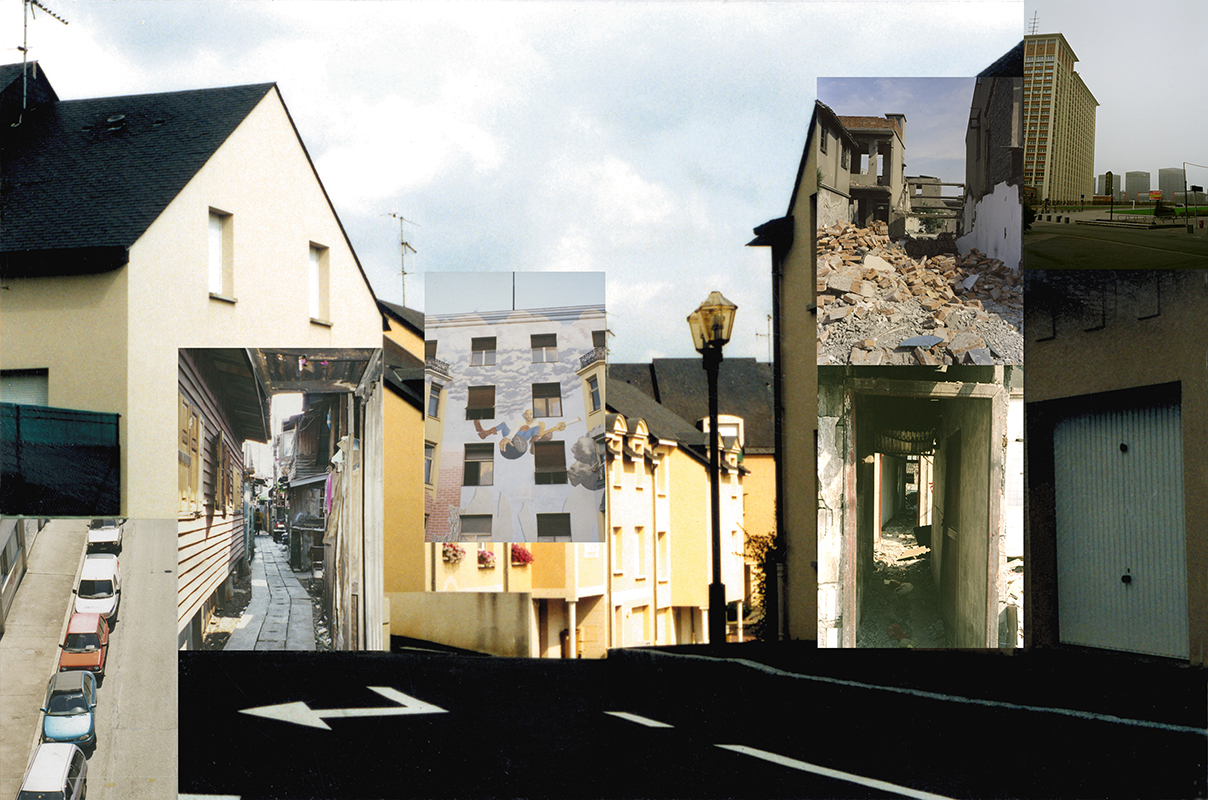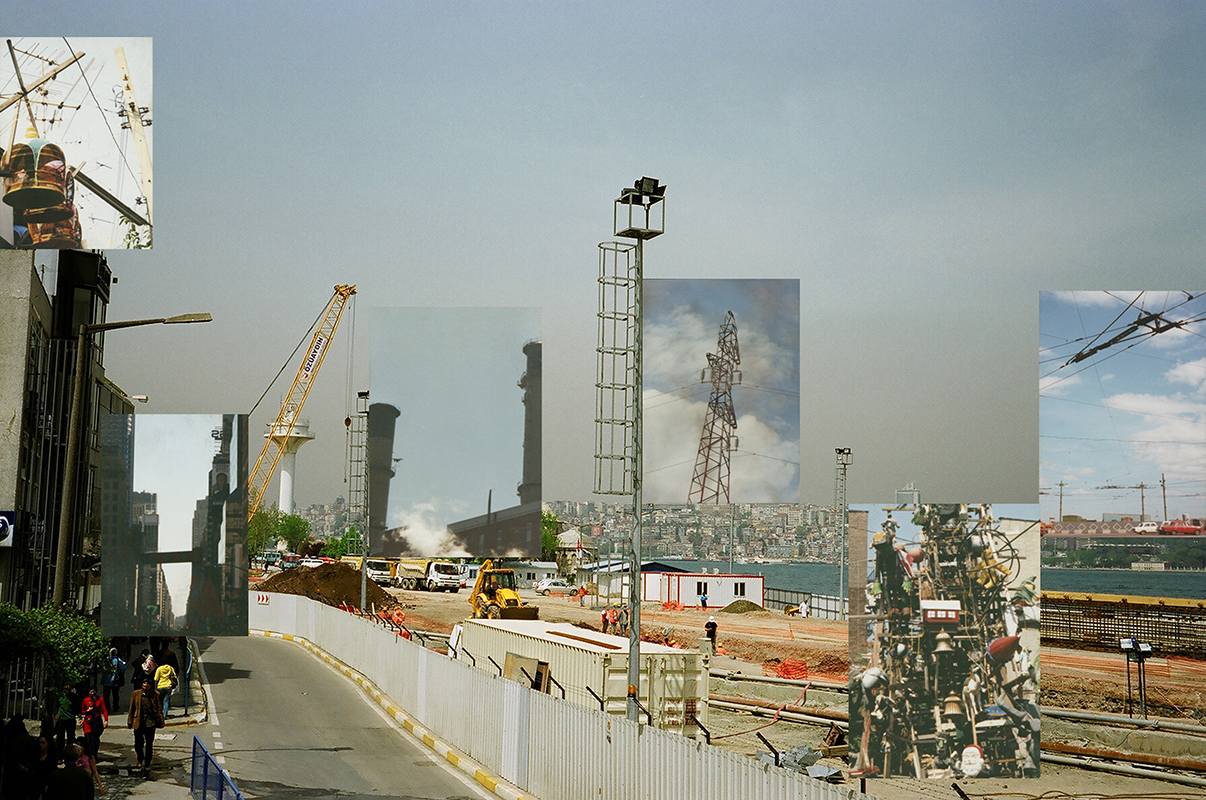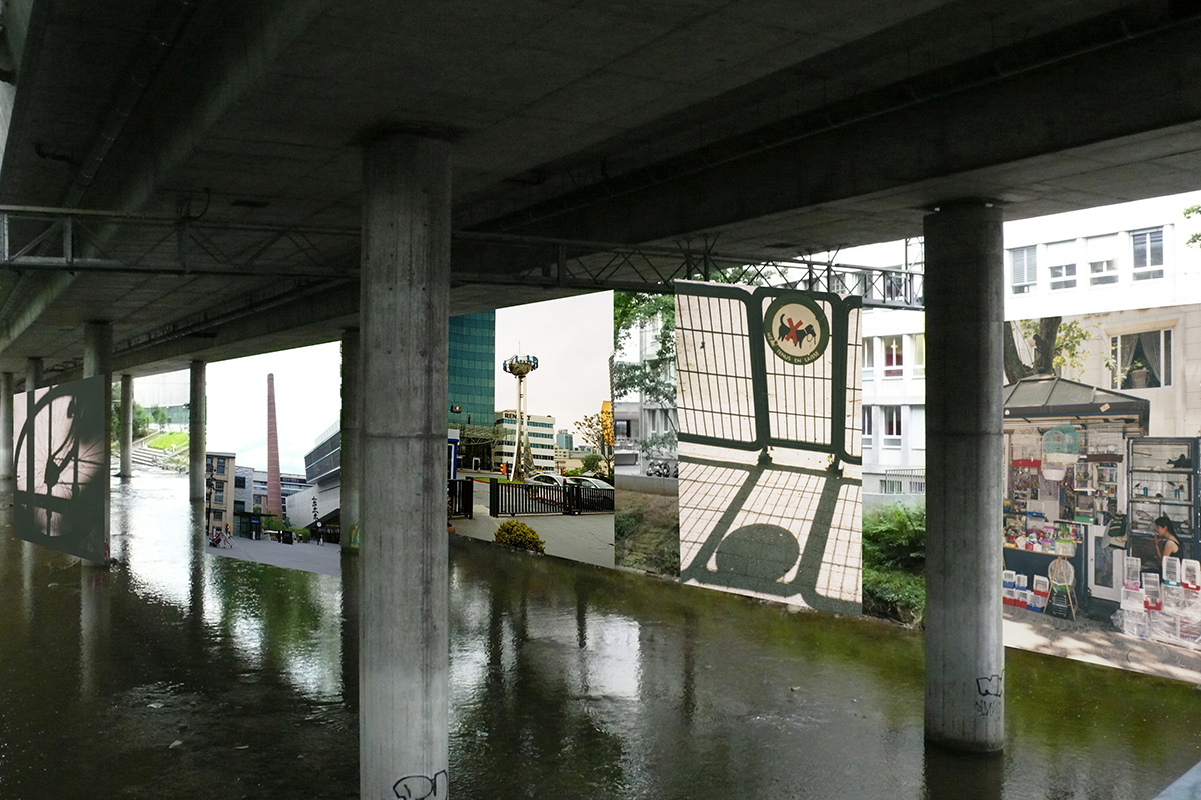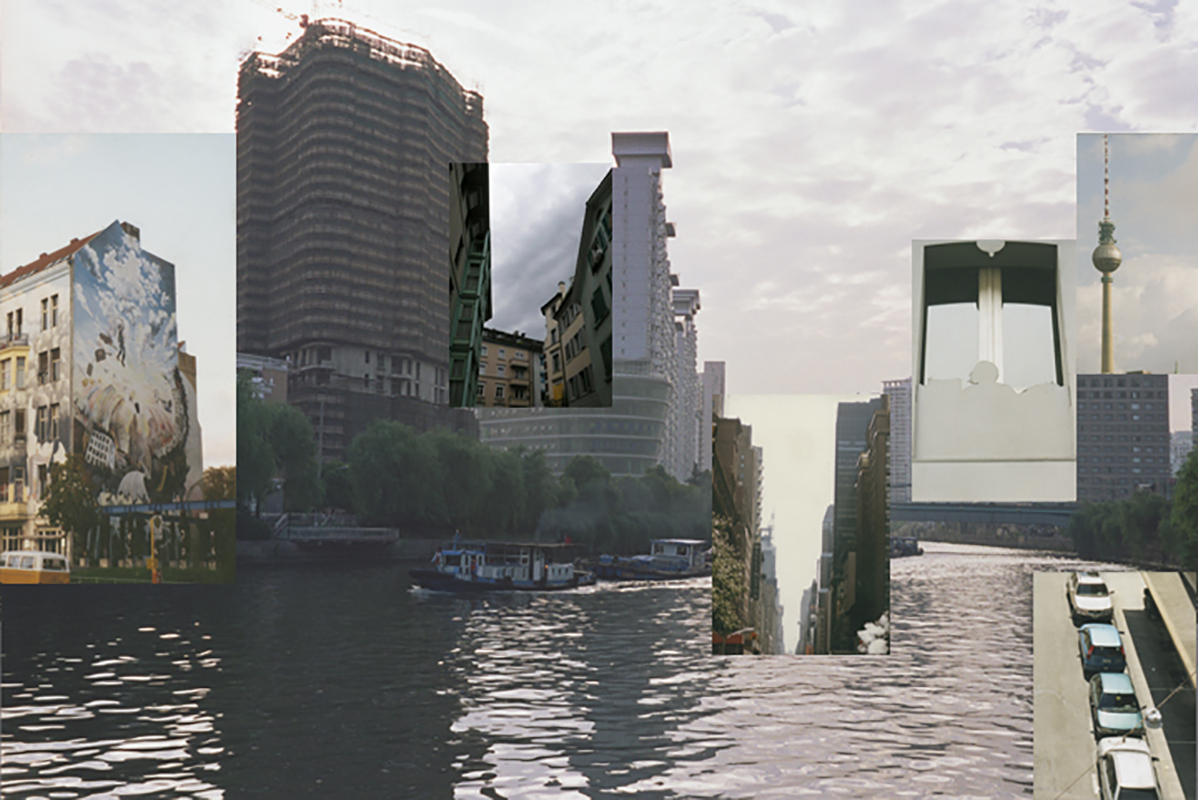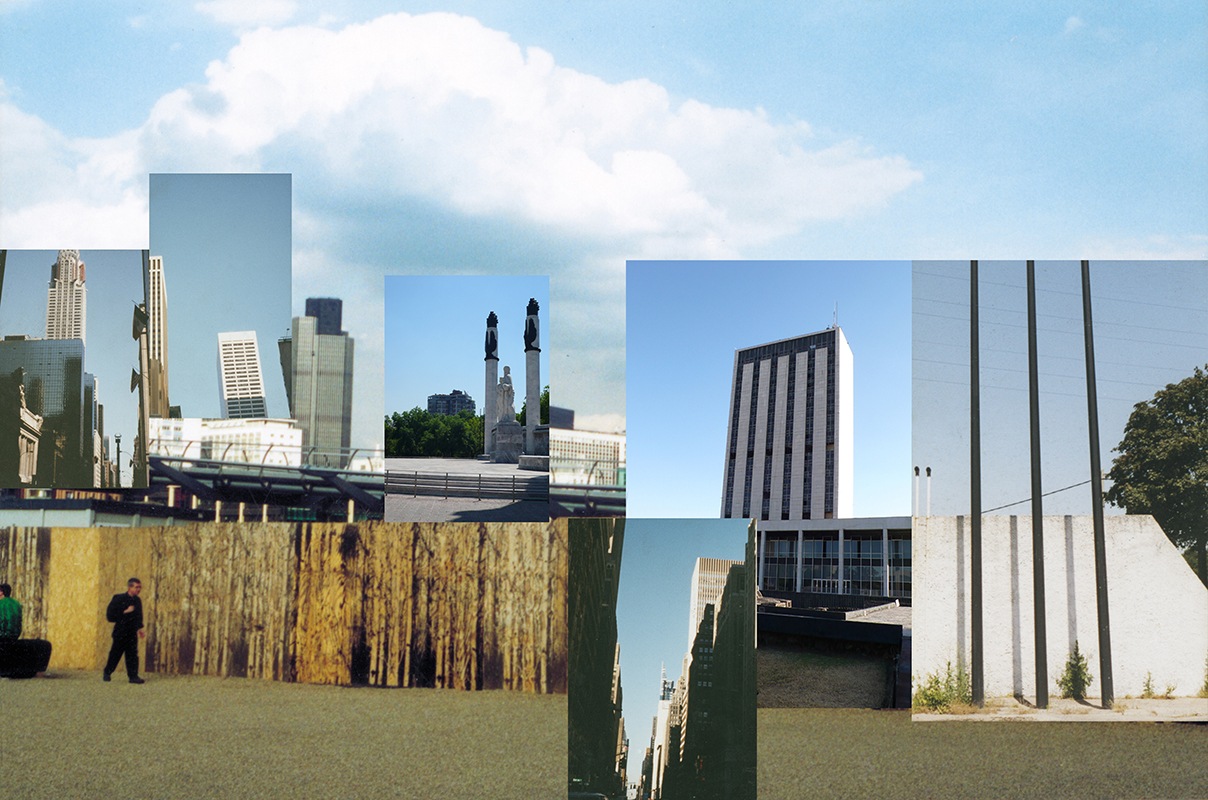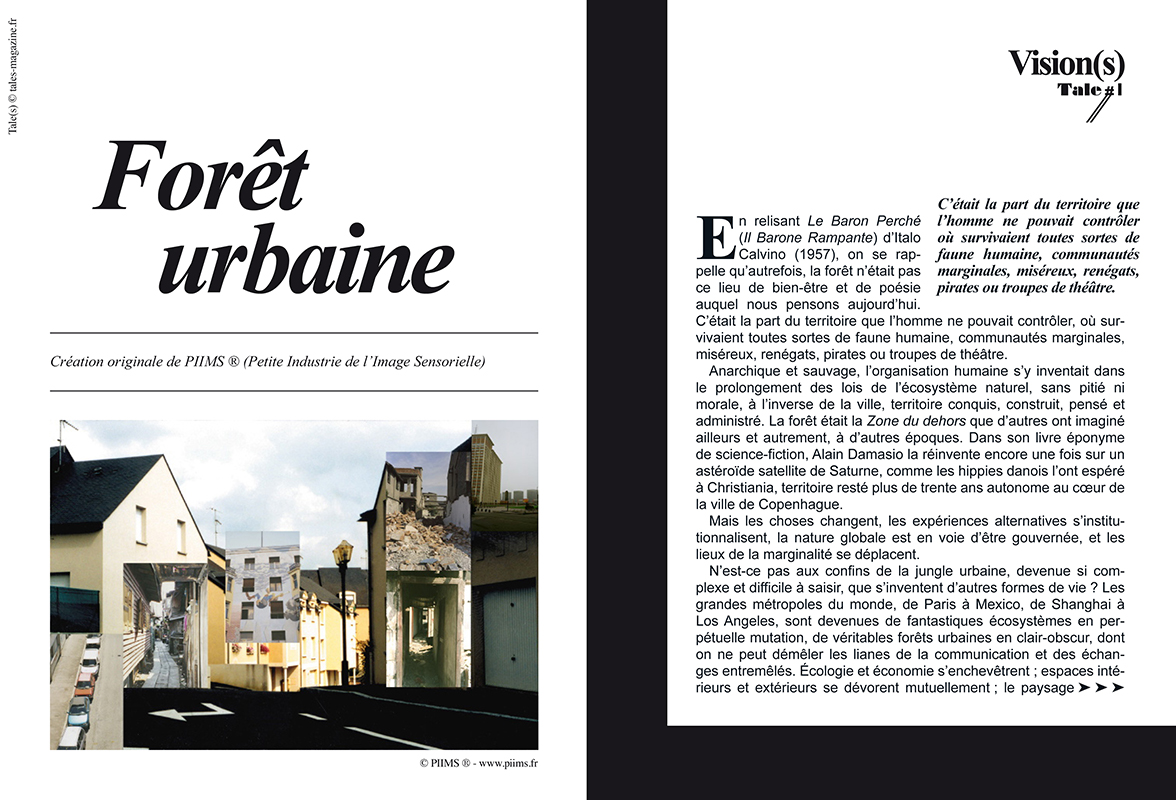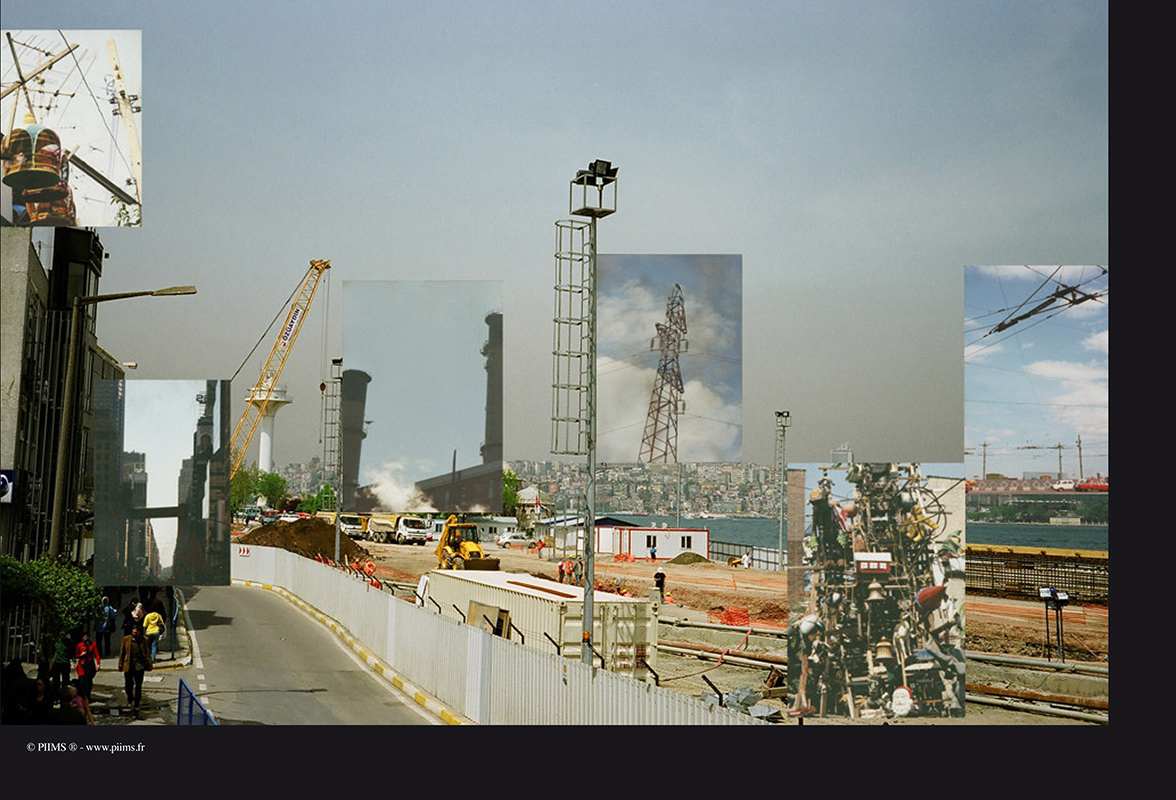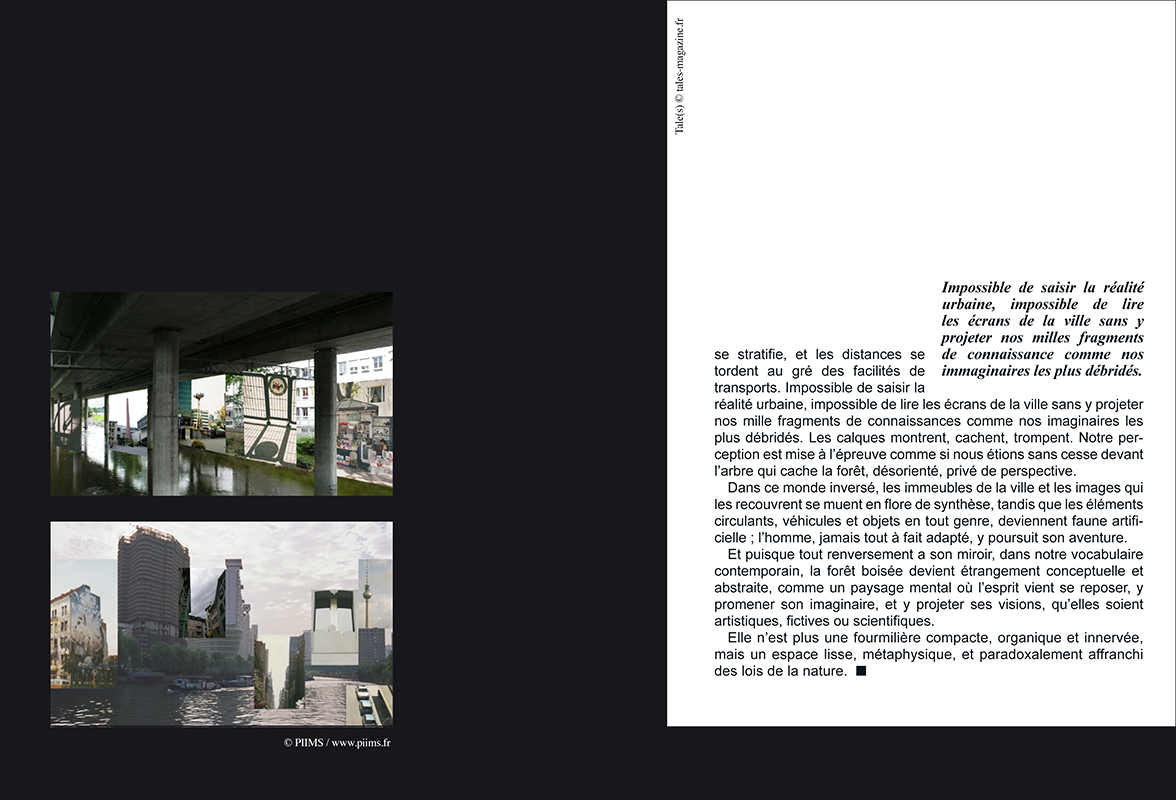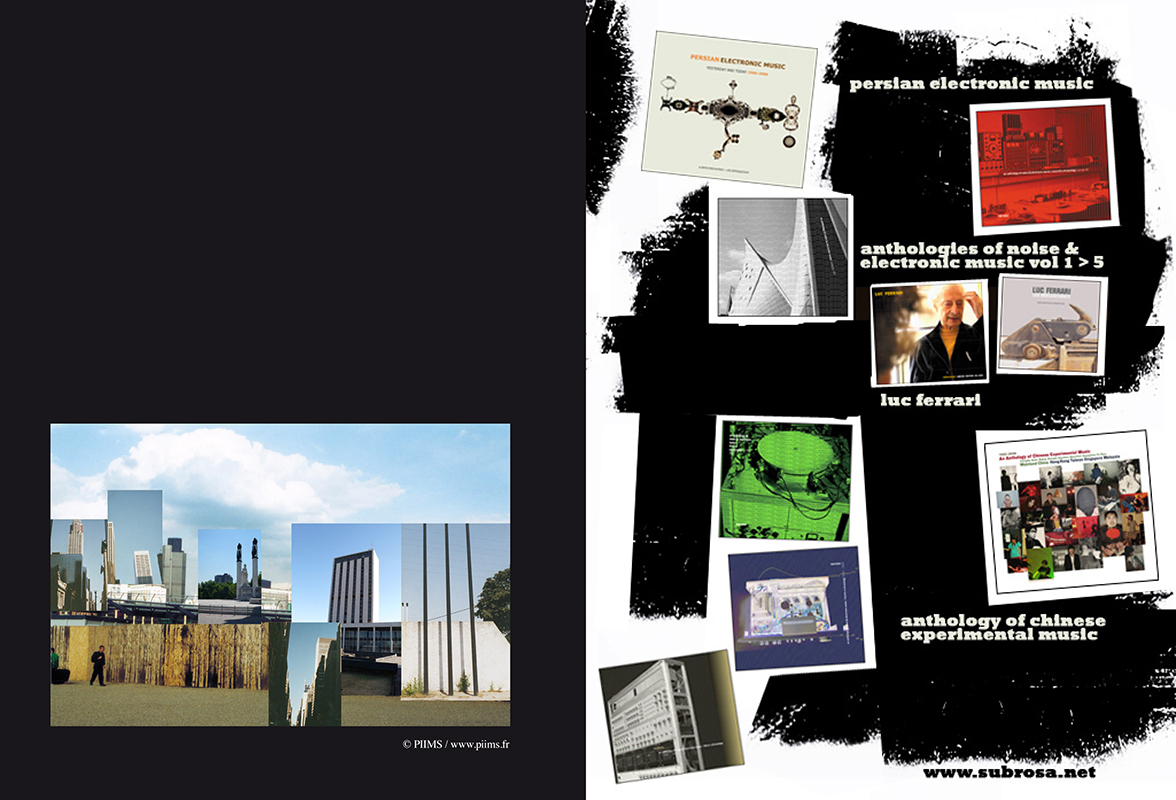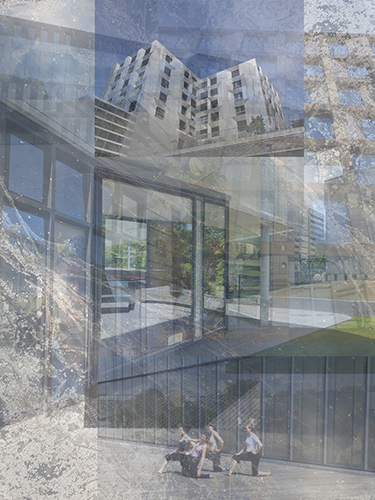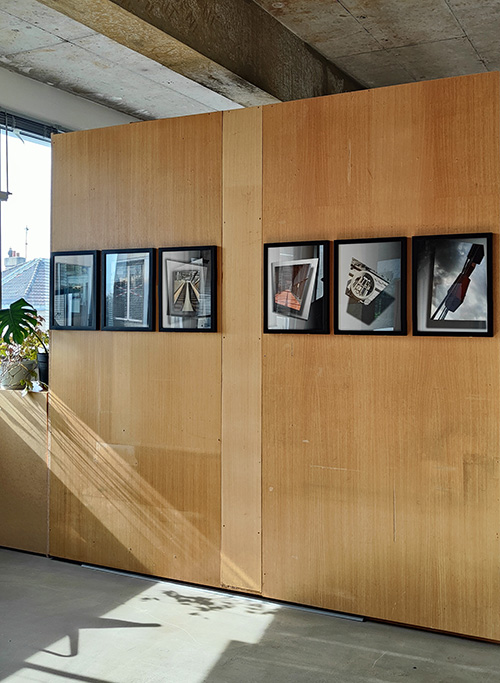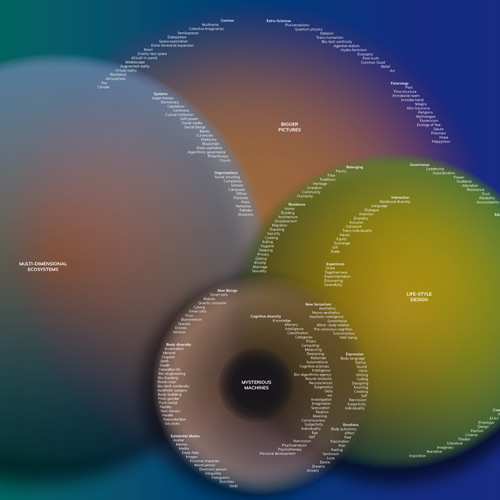URBAN FOREST SERIES, 2009.
5 photomontages, Rag bright white inkjet pigment print on 310g mat paper, h20 x 30 cm.
Edition of 5 + 3 artist copies.
Series complemented by a text (see below) and published in online review Tales Magazine #1 “Forrest”, Paris, 2009.
Urban Forrest, Tales Magazine #1, 2009
Rereading The Baron in the Trees (Il Barone Rampante) by Italo Calvino (1957), we recall that the forest wasn’t always the oasis of well-being and poetry we think of it as today. It was part of the realm that man couldn’t control, where all kinds of human fauna, fringe groups, paupers, renegades, pirates or theater troops survived.
Anarchic and wild, human organization was invented there as an extension of the laws of the natural ecosystem, without pity or morals. It was the very opposite of the city — the conquered, constricted, thought out, governed domain. The forest was the “zone from outside” that others had imagined, elsewhere and otherwise in other times. In his science-fiction novel, La Zone du Dehors, Alain Damasio reinvents it once again in the form of a Saturn satellite asteroid, not unlike the zone Danish hippies hoped for in Christiania, the neighborhood in the heart of Copenhagen that’s remained autonomous for more than thirty years.
But things change, alternative experiences become institutionalized, all of nature is in the process of being ruled and marginal places move.
Is it not at the outer limits of the urban jungle, which has become so complex and difficult to grasp, that other forms of life are being invented? The great metropolises of the world — from Paris to Mexico City, from Shanghai to Los Angeles — have become fantastic ecosystems in perpetual mutation, veritable urban forests in chiaroscuro whose vines of communication and entangled exchanges cannot be unraveled. Ecology and economy get muddled; interior and exterior spaces mutually consume one another; the landscape becomes stratified; distances contort along the lines of transport facilities. It is impossible to grasp the urban reality, impossible to read the city screens without projecting our thousands of fragments of knowledge onto it, like our most unbridled imagination. Translucent layers reveal, conceal, deceive. Our perception is put to the test, as if we were incessantly standing before the tree that conceals the forest. We’re disoriented, with no perspective.
In this upside-down world, city buildings and the images covering them turn into synthetic flora, while elements that circulate — vehicles and all kinds of objects — become artificial fauna. Never completely adapted, man pursues his adventure there.
And as every inversion has its mirror, in our contemporary vocabulary, the wooded forest becomes strangely conceptual and abstract, like a mental landscape where the mind comes to rest, take its imagination for a stroll, and project its visions onto it — be they artistic, imaginary or scientific.
It is no longer a dense, organic, innervated hive of activity, but a sleek metaphysical space and, paradoxically, emancipated from the laws of nature.



